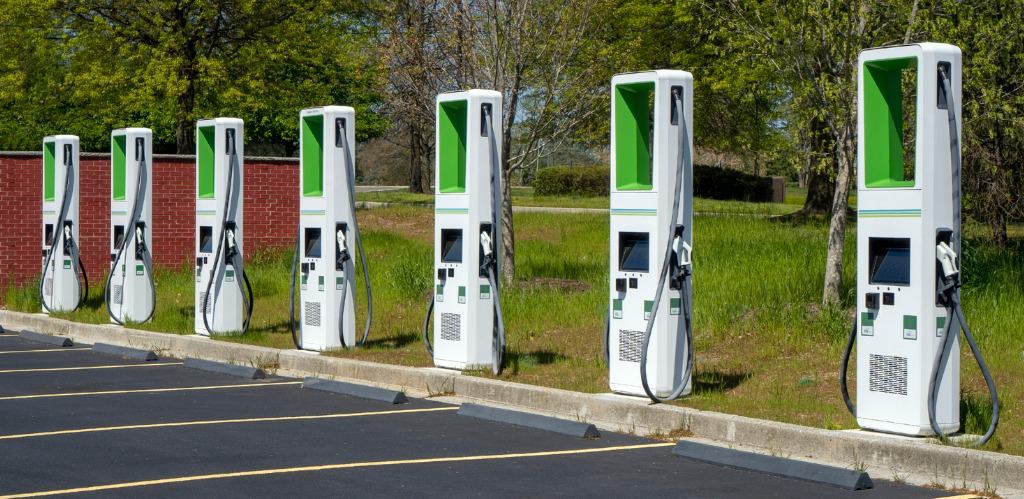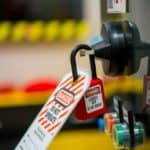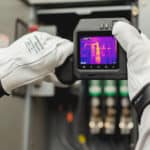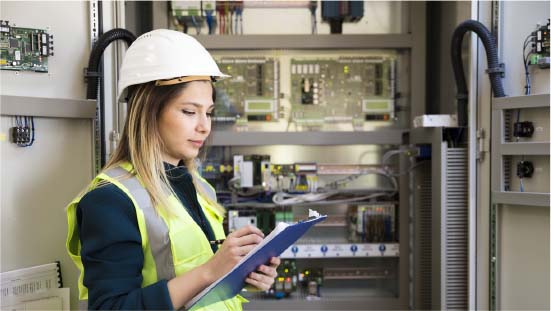Electrical circuits handle a predetermined load capacity by design. They must be regulated to prevent excess current from overheating the wiring and overloading the system. An overloaded system is a safety hazard that can damage vital components and even cause electrical fires. Switchgear exists to regulate electrical assets and ensure their safe and efficient operation.
Switchgear components include electrical disconnect switches, circuit breakers, fuses, and lightning arrestors that conduct or interrupt flowing electrical currents. When an electrical surge occurs, switchgear interrupts the flow of power and protects the electrical systems from the damage of an energy overload.
Why is switchgear needed?
Switchgears are designed to defend equipment connected to a power supply from the threat of electrical overload. Electrical switching equipment protects machines, appliances, motors, and other systems that contain electrical circuitry by controlling and regulating electrical current flow.
Switchgear also protects maintenance and repair specialists from harm by separating them from energized circuits. Electricians and utilities rely on switchgear to de-energize equipment to safely test circuitry, perform maintenance tasks, and clear downstream faults.
How does switchgear work?
Switchgear equipment prevents damage and service interruptions by controlling the power flow within an electrical system. It can isolate affected circuits while concurrently supplying power from multiple sources to a load. When an electrical surge or fault triggers a circuit breaker within the electrical switching assembly, supporting components interrupt and exhaust the current in the overloaded circuit while maintaining service to operating circuits.
Switchboards vs. Switchgear
Switchboards and switchgear serve vastly different functions. They have different hardware components, voltage, uses, and safety standards. Switchboards are low-voltage devices used in commercial and industrial settings to transmit, reroute, and distribute power to individual transformers, control systems, circuit panels, and loads. Switchgear regulates the flow of electrical current to prevent hazardous power surges.
Types of switchgear
In North America, three types of electrical switching equipment are classified according to ANSI/IEEE and NEC 2014 standards for electrical systems that supply alternating currents.
- Low-voltage electrical switching equipment is used for systems that operate at less than 1 kilovolt (kV).
- Medium-voltage electrical switching equipment operates at voltages from 1 kV to 75 kV
- High-voltage electrical switching equipment operates at voltages from 75 kV to about 230 kV.
Electrical switching equipment must be housed in an appropriate NEMA-rated enclosure when used outdoors to protect it from tampering and the elements.
Low-voltage switchgear
Low-voltage switchgear contains switches, low-voltage circuit breakers, earth leakage circuit breakers, miniature circuit breakers (MCBs), molded case circuit breakers (MCCBs), high-interrupting capacity (HRC) fuses, and offload electrical isolators.
This equipment can be configured for indoor or outdoor use and may be rated for use at 208 volts, 240 volts, 480 volts, and 600 volts up to 1000 volts. Industrial, municipal, and commercial facilities commonly use low-voltage switchgear to regulate power delivery to HVAC, lighting, and other building systems.
Medium-voltage switchgear
Medium-voltage switchgear uses oil, gas, or vacuum insulators and circuit breakers to disrupt the current flow in the case of a power surge or system fault. Insulators protect and cool the components within the electrical switching equipment, while the circuit breaker pulls the circuit’s contacts apart to exhaust the arc.
Indoor and outdoor systems are commonly rated at 5 kV, 12 kV, 15 kV, and 35 kV up to 75 kV to indicate the maximum voltage they can service. This electrical switching equipment is commonly employed at generating stations and transmission substations. It is also used to control motors, feeder circuits, and generators at industrial and commercial facilities.
High-voltage switchgear
High-voltage switchgear controls power systems that operate at a minimum of 75 kV. This electrical switching equipment utilizes disconnectors, earthing switches, high-current switching mechanisms, fuses, and circuit breakers to control, regulate, disrupt, isolate, and exhaust current.
Because any electrical fault can create an extremely powerful arc, high-voltage electrical switching equipment needs to operate continuously and reliably. This switching equipment is vital to operations that experience a high incidence of electrical faults and need to regularly de-energize equipment. It is commonly found in large electric transmission and distribution systems and commercial or industrial facilities.
Switchgear insulation types
With varying voltages, switchgear can also use different types of insulation to protect energized devices from electrical faults. Switchgear enclosures make use of the following insulation types.
Gas-insulated electrical switching equipment
Gas-insulated switchgear (GIS) uses circuit breakers that employ pressurized sulfur hexafluoride gas (SF6) to insulate conductors and contacts and extinguish the arc current created by an electrical fault. Carbon dioxide (CO2) is a climate-friendly alternative to SF6. Replacing SF6 with CO2 can reduce greenhouse gas emissions by 10 tons over the equipment’s lifecycle.
Air-insulated electrical switching equipment
Air-insulated switchgear (AIS) utilizes circuit breakers that use compressed air or magnetic force to elongate the arc so it will exhaust itself.
Oil-insulated electrical switching equipment
Oil-insulated switchgear vaporizes the mineral oil along the arc path created when the current-carrying contacts separate and surrounds it with a hydrogen gas bubble that exhausts the current and prevents the arc from re-striking.
Vacuum-insulated electrical switching equipment
Vacuum-insulated switchgear eliminates molecules that could be ionized by electric current. Any arc will be stretched and exhausted even as the voltage rises.
Switchgear installation
Properly licensed workers must install all electrical switching equipment in compliance with applicable safety codes, building guidelines, and manufacturer instructions. Proper installation ensures optimal operational reliability.
Switchgear is essential to maintaining everyday electrical service
Electrical switching equipment is key to the predictable and safe operation of electrical distribution systems. These systems improve the quality of electrical service and are a huge part of upholding electrical safety standards for employees.
Enhance the safety and reliability of your switchgear. Partner with our SEAM Group experts today!





